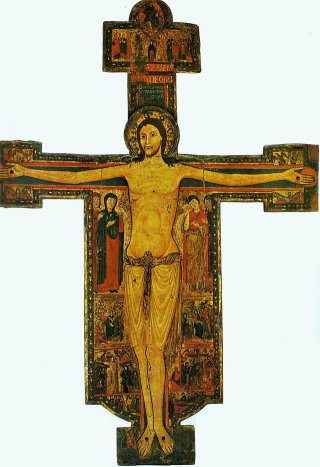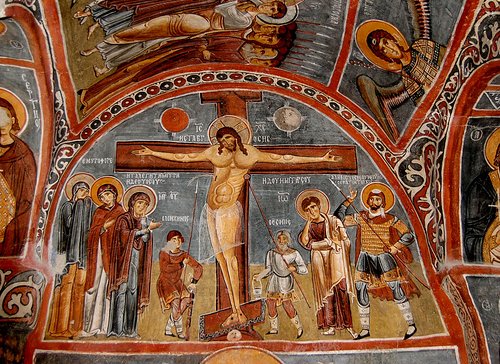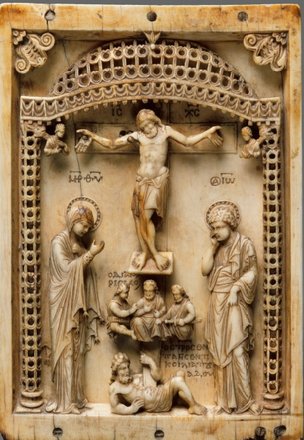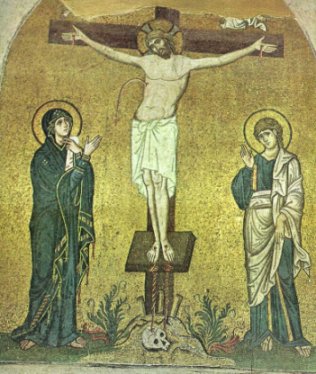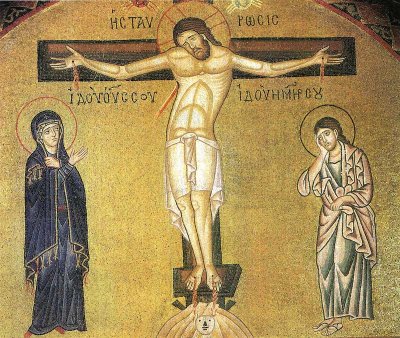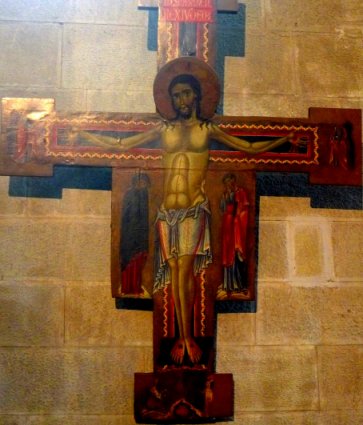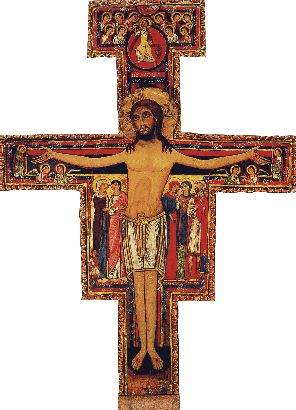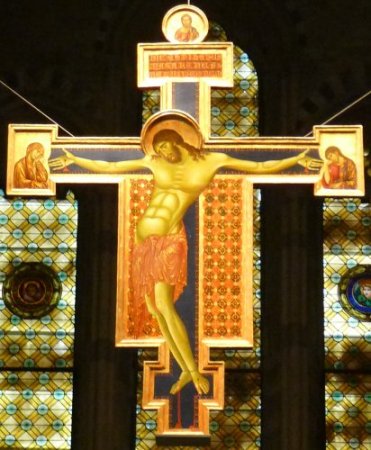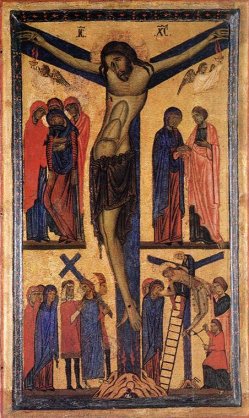|
The
Crucifixion |
|
| There is a widely held view
that the move away from images of the triumphant Christ to those of the suffering Christ was entirely inspired by
Byzantine art, and was brought back to Italy by the Franciscans as
a result of the crusades. I want to the explore this
change in detail here, and consider whether this view is somewhat
simplistic. Let's begin by looking at examples of both types of image and exploring the differences. |
|
|
|
|
|
So, Triumphans: Christ
is alive, head upright, eyes open, no sign of suffering. Patiens: the
dead Christ, eyes closed, body slumped and twisted, an almost
transparent loin cloth, clear signs of suffering. |
|
|
|
|
| Some more Byzantine images: | |
|
|
|
|
|
|
Let's look again at some further examples of Italian Christus triumphans crucifxes: |
|
|
|
|
And Christus Patiens, from the late thirteenth century onwards: |
|
|
|
|
| These examples
demonstrate that that the change didn't entirely convince everyone in
Italy. The
Margarito crucifix has a similar date to the Cimabue, and the two pieces
are less than half a mile from each other. Margarito must have known the
Cimabue, but the style wasn't for him, or the commissioners of his
crucifix. Note too the difference in the loincloth between the two
works by Cimabue. It could be that for the Dominicans of Arezzo,
transparency was a step too far, though it was clearly what the
Franciscans of Florence wanted. So, all cut and dried then. The Franciscans that went with the crusaders in the twelfth century sought out the mystical, emotional side of Byzantine art, perhaps from monasteries, and introduced the idea to Italy where it flourished from the mid thirteenth century onwards. If only life was that simple. |
|
*Images of Power and the Power of Images: Control, Ownership, and the Public Space 2012 |
|
